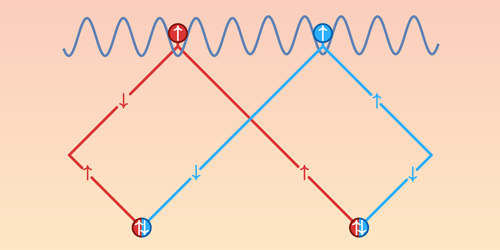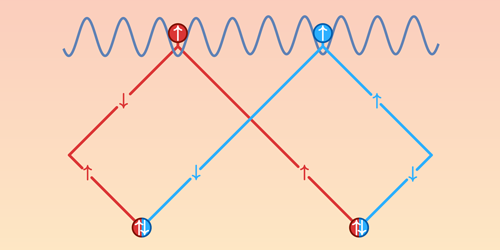Direct View of Exchange Symmetry
Bosons and fermions are the particle equivalent of apples and oranges. Their fundamental difference is encapsulated by the so-called exchange symmetry describing the swapping of identical particles (fermions or bosons) with each other. A new study envisions experiments with trapped atoms—both fermionic and bosonic—that could provide a direct measure of the exchange symmetry. The unique feature of these proposed experiments is that the trapped particles are kept spatially apart, thus clearly demonstrating that the exchange symmetry is a quantum effect and not due to collisions or other particle interactions.
The exchange symmetry says that the swapping of two identical particles should leave their combined wave function unchanged—except for an overall phase. For fermions, this phase makes the combined wave function antisymmetric under the swapping, and as a result, the particles cannot occupy the same state. By contrast, the exchange phase for bosons gives a symmetric wave function, allowing them to be in the same state.
The effect of exchange symmetry is observed in a multitude of ways, for example, in the filling of electron orbitals and the bunching of photons. However, the actual phase is only inferred, never measured. Christian Roos from the Institute for Quantum Optics and Quantum Information in Innsbruck, Austria, and colleagues have devised protocols for direct phase measurements that would be “textbook” demonstrations of exchange symmetry. In one protocol, for example, the team considered the interference of two atoms confined to an optical lattice. The atoms move through the lattice along separate paths, but their final spins have correlated alignments. By measuring how this correlation varies with the relative path lengths, it’s possible to recover the exchange symmetry phase and show that it is different for fermionic and bosonic atoms.
This research is published in Physical Review Letters.
–Michael Schirber
Michael Schirber is a Corresponding Editor for Physics based in Lyon, France.





